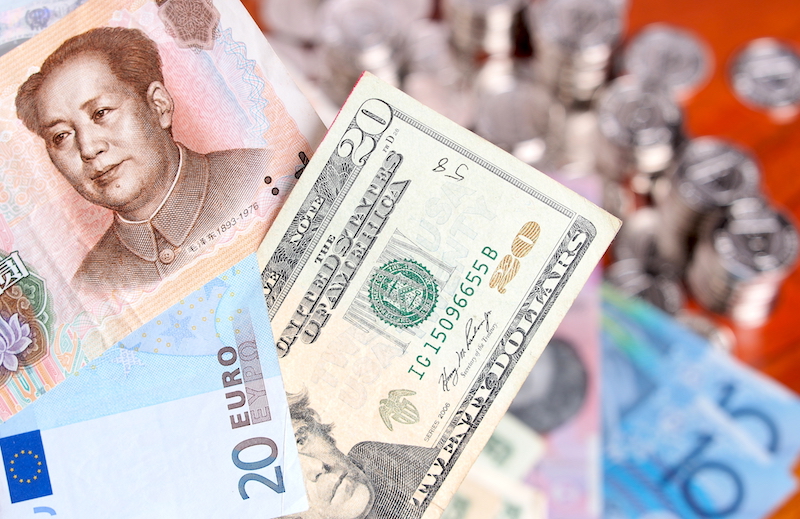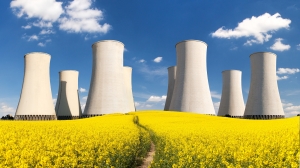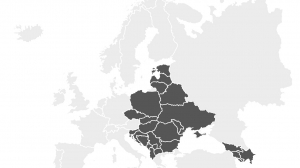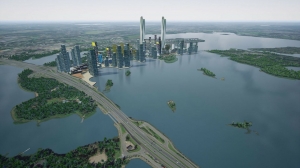Belarusian president, Alexander Lukashenko, is off to China to meet his counterpart, Xi Jinping, during a three day visit at the end of September. “We need a breakthrough in our relations. We need to not just take relations with the People’s Republic of China to the next level, but to shift them into a new orbit. You can see that they are ready for this,” President Lukashenko said, in July, when he appointed Kiryl Rudy as the new ambassador to China.
According to the Chinese statistics, bilateral trade reached $3.2 billion, in 2015, having increased by 5.6 per cent. The Asian giant has become Belarus’ third largest trading partner. China’s total investment in Belarus amounts to $1.34 billion. The two countries are implementing 30 joint projects in electricity, energy, the electrification of railways, the reconstruction of roads, the construction of cement plants, car assembly facilities, small and medium-sized businesses and other areas.
The apple of the eye
“One of the elements in the strategic cooperation between Belarus and China is the project to build the Chinese-Belarusian Great Stone Industrial Park. The park is a most important and exemplary joint project,” Nikolai Snopkov, Deputy Head of the Belarus President Administration and former Minister of Economy, said during the Belarusian-Chinese intergovernmental committee for cooperation, held in August 2016, and as reported by the BelTA News Agency.
The idea of creating the park was first voiced by Xi Jinping, then China’s Vice President, during his visit to Belarus in March, 2010. In October, during Mr Lukashenko’s official visit to China the Belarusian Ministry of Economy and the Chinese engineering company, CAMC, signed an intergovernmental agreement which was ratified in, January 2012. The joint Chinese-Belarusian company for the development of the park, in which China owns 60 percent of the shares and Belarus, 40 per cent, was set up in August 2012.
“Belarus was the first country to support the idea to renovate the ancient Silk Road, which has been developed. Since then the Chinese government has been focussed on the creation of a new route. Belarus’ location predetermined its position within the Silk Road [aka One Belt, One Road] and made the industrial park a key element of that route. For this reason, Great Stone can be thought of, not only as a location for transfers. but also as a place where goods can be stored, packaged and even produced,” says Krill Koroteev, First Deputy General Director of the Great Stone Industrial Park Development Company.
An innovate eco-city in the making
Ansgar Rudolph, project manager at InSite Bavaria, a German competence centre for industrial site development that is owned by the Technical University of Munich, says investment opportunities in Belarus are little known in the West. “It is important to remember that the Industrial Park is at the crossroads of Western and Eastern Europe, on the way from Berlin to Moscow but also connecting the Baltic Sea with the Black Sea,” he adds.
The park is located close to Minsk International Airport on the E30 European route which stretches from Ireland to Siberia and it is 500 km away from the nearest harbour – Klaipeda in Lithuania. Its total area amounts to 91 sq. km and the park holds the status of an economic free-zone.
“The main idea behind the Industrial Park was to establish an innovative and high-tech manufacturing site with high export potential. The requirements for becoming a park resident are higher than in the other six Belarusian SEZs, in order to guarantee that innovative projects are attracted. Additionally, park residents enjoy greater tax benefits. Most importantly, Great Stone is not only a place for doing business, but also an eco-city with comfortable living conditions for approximately 200,000 people and is located close to Minsk,” Mr Koroteev adds.
The park’s current residents have planned investment projects in telecommunications, railway vehicle production, biotechnology, mechanical engineering, R&D and logistics, with the latter being the driving force behind the park. Other sectors favoured by the park are electronics, pharmaceuticals, fine chemicals, machinery and new materials.
European expansion plans
For the ZTE Corporation, a global telecommunications leader and an industrial park resident, it is the actively developing telecommunications market Belarus which encouraged the company to invest here. Now the company wants to create a research centre to analyse and predict the development of the European telecommunication’s market.
Another resident, Chengdu Xinzhu Silk Road Development, part of the Xinzhu Corporation, is one of the main suppliers of international road and bridge construction equipment: They are currently assessing the process of implementation for electric buses with supercapacitors (SC) in Belarus, which will help to introduce Chinese technology into the country and, eventually, enable Xinzhu to introduce their products into the CIS and EU countries.
“The construction of the new Silk Road, which will connect China with Europe and strengthen cooperation with Asia and Africa, is the creation of a trade corridor for the direct delivery of goods from East to West. The Xinzhu Corporation intends to carry out further international cooperative development but at the same time they would like to minimise the risks and barriers to trade and investment,” Venera Gundar, chief lawyer at Chengdu Xinzhu Silk Road Development, told Emerging Europe.
“ZTE Corporation considers this initiative a unique chance to make a big step forward, because the most active development of the company is connected with global cooperation,” says Siamion Dzirko, Chief Commercial Officer at the Belarus Development Office of ZTE Corporation.
Safer access to the Chinese market
China’s One Belt, One Road project aims to make central Asia more connected to the world, but the country is not the only investor in central Asian connectivity. Multilateral financial institutions, such as the Asian Development Bank, the European Bank for Reconstruction and Development and the World Bank have been investing in the region’s infrastructure for a long time. Countries such as Kazakhstan, Turkey, the US, and even the EU have also made improving Eurasian connectivity a part of their foreign policy. International businesses are also looking for potential benefits in this area.
“We are working on an agreement between a German park, a Chinese park and Great Stone to create a chain of free economic zones along the Northern Corridor of the One Belt One Road in order to facilitate the transportation of products from Western Europe all the way to China and back. This is not only to let them pass, but also to integrate locations along the way into a value chain route, according to common standards. I see an opportunity for Western companies to get into this production value chain with Chinese companies, right there in the Great Stone Industrial Park,” says InSite Bavaria’s Mr Rudolph.
“Currently all the land routes of the new Silk Road Belt start in China and come to Europe. China is the European Union’s number one importer. That means that any economic risks related to the Industrial Park are on a minimal level. Conversely, investing in the park may provide plenty of opportunities. First of all, the industrial park may be considered a platform for the markets of Eurasian Economic Union (EEU) members through the use of a preferential regime. Secondly, they can enjoy the support and assistance of their Chinese partners, in a logistic sub-park that promote goods to the Chinese market,” Mr Koroteev adds.

A threat or an opportunity
“Instead of investing in a production plant in China, companies from Europe can have Chinese partners at Great Stone. I see great opportunities for European companies to be closer to China, to be the neighbour of a Chinese company without facing the biggest disadvantages of operating a plant in China. Great Stone is the first transnational industrial area that provides a common ground for European and Chinese companies and that implements common standards for the two business worlds,” says Mr Rudolph.
“Great Stone is going to be an international area with businesses that represents various nationalities but we are also very close to the European Union, which offers new technologies, high levels of management, high standards of quality of manufacturing and high ecological standards. At the moment we are in the process of obtaining the Eco-Management and Audit Scheme (EMAS) certification,” says Mr Koroteev.
There are concerns that the One Belt, One Road initiative, which according to Beijing is set to eventually reach 4.4 billion people in more than 65 countries, is designed, not just to create new trade and investment opportunities for China, but to accelerate the build-up of Chinese influence in Asia, Africa and most importantly in Europe. China has started to engage Central and East European (CEE) countries which are hungry for foreign direct investment in a new corporation framework thus making them dependent on Chinese capital.
“By aligning its existing approach to Central Asia with the Silk Road, the EU could use the security dimension of the infrastructure network that Xi Jinping himself has imbued it with. The EU could become not just part of, but a contributor to a Eurasian security network in the making. […] By devising a common European response to the Silk Road, the EU can move from economic considerations at the FDI level, to incorporating the Silk Road into its own Global Strategy,” analysts of the Netherlands Institute of International Relations Clingendael wrote in their paper ‘One Belt, One Road’ — An Opportunity for the EU’s Security Strategy, published in December 2015.
Building a bridge
“China and the EU share common values: smart sustainable and inclusive growth; enlarging and deepening cooperation; the importance of networking in the framework of our mutual dialogue,” said Corina Crete, European Commissioner for Regional Policy, after the roundtable discussions held in May 2016, in Brussels.
For Belarus, which is naturally counting on more Chinese investment, the relations with China may be strategic, as the country is positioning itself as a bridge between the EU and China and President Lukashenko’s ninth visit to Beijing is bound to strengthen the relations.
“By facilitating the two giant economic entities [i.e. China and the European Union] coming together through the Great Stone Industrial Park route, Belarus has set an example for others to follow,” Dr Mohammed Alzarooni, Chairman of the World Free Zones Organisation, said in an interview with Emerging Europe.






Add Comment